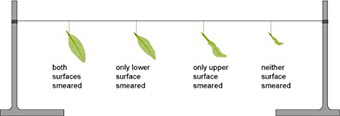Resource 5: Investigations
![]() Teacher resource for planning or adapting to use with pupils
Teacher resource for planning or adapting to use with pupils
Simple investigations
In order to help their students learn about how to do investigations, teachers often choose a simple problem or question. Students can then concentrate on the investigation and not worry about the science.
Testing household products is popular, such as investigating which is the strongest bag for carrying groceries.
At the end of this resource is a template for a simple paper helicopter. Students can time how long it takes to fall from a height. They can change the area of the blades (by cutting them down) or change the mass by adding paperclips. In the process they learn about predicting, fair-testing, repeating readings, taking averages and spotting results that should be discounted.
To help your students plan a simple investigation you could write these questions on the board:
- What question are you trying to answer?
- What do you predict the answer will be and why?
- How will you measure … [the strength of the material, the time for the fall, etc.]
- What will you have to keep the same for each test?
- How will you record the results?
- How will you make sure the results are reliable? [They may need prompting to repeat readings.]
- What do you think the difficulties will be with your experiment? [Encourage them to do some trials to test their method.]
In an investigation like this the process is more important than the results. At the end gather your class round the front and use questions to draw out the important features of the process. Highlight the importance of making a prediction, testing the method, controlling variables, repeating the measurements, looking critically at the results and being prepared to ignore any where an error has been made. Once your students understand the principles of a scientific investigation, they will find it easier to plan an investigation to test a scientific question.
Leaf investigation
This is a simple investigation but it is important to let your students work out how to do it. Resist telling them the answers, but do ask leading questions if they are stuck.
You can tell them that rubbing petroleum jelly on a leaf will seal it and prevent water escaping.
Let them work out how to test whether both sides of the leaf lose water, or whether one side loses more than the other.
Each group will need some leaves or access to a small plant in a pot.
There are two ways you can set this experiment up.
- Experiment to show that more water is lost from the under surface than from the upper surface of most leaves
- As many leaves as possible (preferably still attached to plants) are treated as shown:

- Leave for several minutes.
- Result

A series of leaves have their surfaces variously smeared with petroleum jelly
The leaves are left for a few days and observed at various intervals
Result

Below is a template for making a simple helicopter. Cut round the bold lines and fold the dotted ones.

Resource 4: Understanding the structure of leaves



